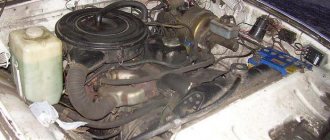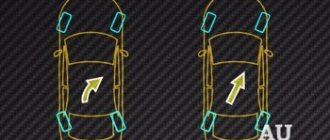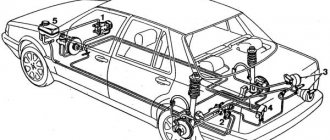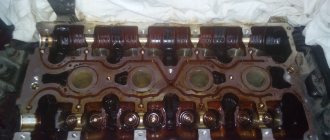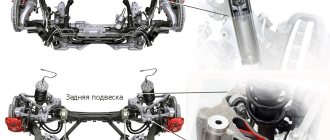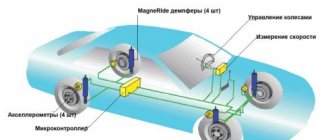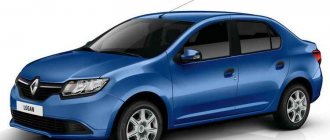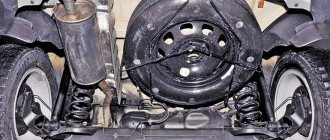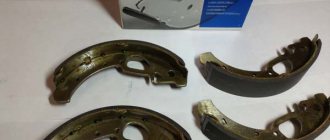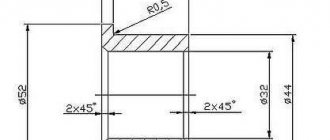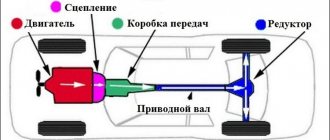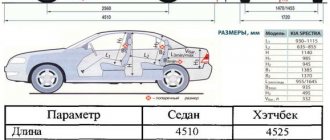The suspension affects how controllable and stable a car is on the road. Its different types are designed for certain conditions. If the suspension is soft, then optimal comfort is guaranteed. If it is rigid, it allows the car to move quickly when turning. The possibilities of movement are limited by such an important concept as clearance. If the vehicle is low, it will not be able to drive off-road.
Let's talk about coilovers: what are coilovers?
As you know, ordinary springs are made of many turns. It is thanks to this that they can compress and unclench. Coilovers are a screw-type suspension that compresses the spring relative to the shock absorber. In this case, the shock absorber may have additional stiffness adjustment.
Coilovers make it possible to easily adjust the car to certain driving conditions. This screw suspension is as convenient as possible.
These are ordinary car struts that only allow you to adjust the height of the spring. Typically the coilover body is helical. The coupling moves along it. It raises or lowers the spring. As a result, it is possible to raise or lower the suspension.
Coilover is a special screw-type body. The spring stop constantly moves along it. It is required in order to adjust the suspension if necessary. It is often used for drifting and sports competitions.
The helical suspension allows you to effectively lower the car. It all depends on what brand it is. Most coilovers drop 20mm in the high position. You can choose optimal lowering settings from 2 to 10 cm. Many people choose an average lowering of the car in the range from 3 cm to 5 cm. If a person carefully prepares a car for prestigious exhibitions and famous shows, he lowers it very low. Typically, coilovers provide the ability to lower your vehicle as much as possible.
You can make not only vertical adjustments, but also horizontal ones. If necessary, you determine the required wheel angle. This is a well-known collapse.
Types and features of coilovers
There are two types of coilovers. First option: the regular stance remains completely. A screw thread and a spring are simply placed on it. At the same time, all characteristics change completely. When the vehicle's ground clearance changes, the shock absorber cannot cope with the correct operation of the suspension. As a result, controllability is significantly reduced.
Another type is a complete change in stance. In this case, the thread is applied to the rack body itself. This method is significantly better for a number of reasons. Its advantage is the ability to adjust the ground clearance of the car. There is no need to disassemble the suspension. As a result, it is possible to significantly lower the car.
Typically, people purchase coilovers with shock absorbers. This option is the most expensive. Coilovers can also be supplied as a kit with top mounts or support type bearings. You will have everything you need for installation. Also included are traditionally new bumpers, which are specifically designed to lower the car.
For drag racers, partial kits are available with only front coilovers. There are also screw-type threaded springs without posts.
Coilovers are used not only in cars, but also in motorcycles. Using a screw suspension, you can adjust the ground clearance to the required height. For this, threads in the rack are used.
How to paint a car correctly: preparation and painting itself. Watch us on how to clean the throttle valve?
Car recycling process: getting rid of junk and making a profit.
If desired, you can easily adjust the lowering you need. It is possible to make separate adjustments on each axis. If desired, you should use tires that differ in size. If the car is a show car, you have a real opportunity to make it perfectly low especially for the show. Some coilovers come with a firmness setting. High rigidity allows the car to move as quickly as possible when cornering. The shock absorbers are equipped with certain settings that are not available in standard shock absorbers.
Coilovers have advantages and disadvantages. Among the advantages it is worth highlighting:
- Quick installation. This does not require any special knowledge. The installation is exactly the same as for conventional racks.
- Allows you to change the clearance. If desired, you can raise or lower the car by 2 - 3 cm. An excellent option for those areas where the roads are bad.
- There is no need to trim the springs.
- It is possible to customize the suspension for yourself. Selecting optimal comfort or stiffness and wheel angle.
- Service life has been significantly increased. The reinforced design guarantees long-term performance.
- You can purchase a kit that allows you to upgrade existing racks.
- There are options for almost any car.
The downsides are worth mentioning:
- High cost, three times higher than the cost of conventional shock absorbers from well-known manufacturers.
- It is important to set up correctly, maintaining wheel synchronization. If this is neglected, driving performance will deteriorate.
- It is not always convenient to install on old racks.
- It is often necessary to adjust the camber. This is not required for standard racks.
Coilovers have pros and cons. Such springs allow you to replace short springs, which craftsmen install on cars for the summer, and winter springs. Coloyvers successfully replace these two sets. If desired, you can even increase the ground clearance in winter, since snow drifts are a common phenomenon during this period. In summer it’s good to go down a little.
Suspension tuning theory
< Back
Next >
Having upgraded the power unit and taught the car to brake, you began to notice that it is scary to take high-speed turns in a car - the body tilts noticeably. And even with a sharp start, the “muzzle” lifts up, and braking, on the contrary, “pecks” a lot. As a result, it became necessary to modify the suspension. Car suspensions - can they be improved? Many tuning engineers are scratching their heads over this question.
Suspensions used in car tuning can be divided into mechanical and working environment. The latter are hydraulic and pneumatic. Hydraulic and pneumatic suspensions are a topic for another discussion. Because hydraulic suspension refers to a whole culture of car tuning - lowrider.
The car rests on the suspension. It is an intermediate link between the body and the road. Therefore, the car suspension must be comfortable, durable, strong, lightweight, safe, soundproof, informative, provide the kinematics of wheel movement and ensure the transmission of horizontal (acceleration-braking) and vertical loads.
| The suspension consists of three main elements: elastic, damping and guide. In tuning, many positions are used to modernize the suspension. Basically, it all comes down to changing the elastic and damping elements (lowering and increasing rigidity), and not to changing the kinematics of the guide element. |
When lowered, the center of gravity decreases - improves handling and stability, and the reduced ground clearance increases the maximum speed (due to a decrease in the frontal area). Secondly, it makes her tougher. At the same time, a significant reduction in roll is added to the above characteristics, which means higher cornering speeds and critical “maneuvering” speeds. Although you will have to forget about trips into nature - it turns out to be a sports car, not an SUV. Although tuning the suspension for off-road driving comes down to lifting - increasing the ground clearance.
| An elastic device in a suspension is a spring, torsion bar or spring. Springs and torsion bars are not used in tuning passenger cars due to a design deficiency on a modern passenger car. They have found application in tuning SUVs, where serial ones are replaced with reinforced and more rigid ones. |
When upgrading suspension springs, there is a certain gradation of modification. Let's look at ways to tune springs.
| The first method is serial springs and modification of serial ones. The easiest way to modify the suspension is to combine stock standard springs with new shock absorbers. If new shock absorbers may not seem enough, they resort to modifying serial springs. |
This involves shortening it by cutting it into a turn. With easy tuning of the suspension, a modernization option is possible - a shortened spring and a standard shock absorber. With this option, the ground clearance is reduced, which is bad for our roads, but the center of gravity is reduced, which is positive. Spring rebound limiters are often installed, which are a cable attached to the body and suspension, so that if the wheel possibly lifts off the ground, the heavily shortened spring does not fall out of the suspension. Be sure to install compression bumpers. Such “mockery” of the suspension is low-budget, which is why it is popular. They are used during suspension repairs or replacement of shock absorbers, which is recommended to be done more often than all the fluid has leaked out of a worn shock absorber. An obvious lowering of the suspension by half a turn or a turn (15-30 mm) can be disastrous for the shock absorber, because The stroke of the rod during compression is reduced, and the rebound stroke increases: the rod is in the non-working zone. In addition, when the suspension is lowered, the wheels begin to catch on the wing arches. And the more, the lower the car sits. True, every cloud has a silver lining - we modernize the appearance: we make wide wheel arches.
| The second method is to install other springs. There are possible options here - either tuning hard shortened ones, or soft high ones that increase ground clearance, or hard high ones designed for transporting goods. But we are interested in special, lowered springs. |
So, for high-speed tuning, specially wound springs have a different thickness of the rod, the shape of the winding (cylindrical or conical, barrel-shaped) have a variable pitch of the coil or a variable section of the rod, which means they have a different operating characteristic, usually nonlinear with greater rigidity. So, springs represent a “untilled field” when adjusting the suspension. It’s no wonder that the Ford rally team stocks six different sets of springs for the gravel stages. Special tuning springs are usually 20% or less stiffer, in the first case by 15-20 mm, in the second, more extreme, by 40-60 mm. In tuning there is the concept of sports suspension, which means a combination of new lowered springs and already selected shock absorbers. Shock absorbers can have adjustable stiffness. But more on that below.
| Screw pendants. They consist of one or two springs and a thread with a nut on the shock absorber body to adjust the preload (and therefore the length) of the spring. These are suspensions with adjustable spring length within 60-90 mm. This means the ground clearance can vary from a racing 70mm to an off-road 160mm. |
The double elastic element consists of a main spring and a spring, the latter having a cylindrical or rectangular rod. The spring is needed to complement the short-stroke main spring, which fully expands when the wheel is suspended. The spring and the spring have different stiffnesses. This property makes the stance progressive and works well on different types of roads. A strong understatement changes the kinematics of the wheel.
| When the suspension on the wishbones is greatly lowered, the wheels move away from their optimal position and become a “house”. When overestimated, they become like the “hunchbacked” Zaporozhets. Wheel alignment adjustment is required after each understatement or overstatement. Although in 2-3 hours you can create two different chassis options (and many intermediate ones) for a racing ring or for a country road. |
| The damping device of modern suspensions is a telescopic shock absorber, oil or gas. Gas ones are more reliable, and, as a rule, more rigid and energy-intensive. Shock absorbers for tuning can be single-tube or double-tube. There are inverted shock absorbers (in which the rod is stationary) - they are considered the most modern. |
At the same time, the design of inverted gas shock absorbers provides more stable performance characteristics. There are shock absorbers with an additional compensation chamber. They are the most energy-intensive, because “extra” working medium (gas, oil) flows into the chamber.
| The quality of workmanship from well-known manufacturers guarantees a resource. Shock absorbers for a tuning car must be selected individually. When lightly tuning the suspension, they are limited to installing only gas rigid shock absorbers. A large number of mass-produced parts, individual projects require careful selection of components. |
| There is an option to adjust the hardness. The hardness can be adjusted step by step. The simplest and cheapest ones provide 3-5 adjustments. The most serious ones are 15. Moreover, some suspensions allow you to adjust the stiffness from the driver’s seat. Adjusting the stiffness of most shock absorbers is a small wheel on the rod. |
In other designs, there is adjustment by the angle of rotation of the rod or a screw on the shock absorber body. To adjust the stiffness of the “inverted” shock absorbers, you have to crawl under the car. In some cases, two shock absorbers are used per wheel with dependent and independent wishbone suspension. It came from the rally. During the Soviet era, more than one VAZ and Moskvich were successfully prepared.
| Stabilizers are necessary in a car to connect the right and left side wheels. For a tuning car, stabilizers are used with a larger diameter (usually 2-3 mm, which is quite enough) and, accordingly, more rigid, which prevents large body rolls when turning. |
If the car does not have it, as is the case with the rear suspension, you need to purchase a kit and install it. Stabilizers are adjustable. Some hangers are designed to accommodate an additional stabilizer. There are two possible installation options - close to the standard one or two together. At the same time, stabilizers must have different characteristics to ensure progressive operation. Adjusting the stabilizer is a very interesting task, because increased angular stiffness improves cornering stability (countersacts body roll) and promotes rapid stabilization after cornering and prevents body sway.
| Guide – provides the kinematics of wheel movement. The guide device can be single-, double-, or multi-link and spark plug (McPherson-type suspension struts). The levers in the suspension are longitudinal, transverse, diagonal and mixed (longitudinal-transverse levers). |
Moreover, many modern cars have independent spring suspension, which has good kinematics, ease of design and maintenance, and low mass of unsprung parts. Although the dependent one is simpler, cheaper, and has a constant track. But independent ones have more advantages, so the most common today are McPherson struts, since their advantages made it possible to install them on many popular tuning cars. Although in pure sports they use double wishbone suspensions with A-shaped arms.
| With light and medium tuning, the guides and their connections to the body are rarely changed, but with serious tuning, rods, ball joints, upper supports and silent blocks must be replaced. Levers - rods in the suspension are replaced only for serious sports. New suspension parts with modified geometry and variable geometry are manufactured. |
Thus, adjustable levers are popular, which are stronger than serial ones (powerful and rigid made of steel or duralumin tubes (reducing unsprung masses) and it is possible to change the angles of the wheels. In some rally-type cars, standard structures are strengthened by welding metal strips. Also for extreme operating conditions they use body reinforcement at the suspension mounting points. Many extreme sports enthusiasts install metal joint joints instead of rubber silent blocks. At the same time, the car feels good (clearer and stricter), but any hole shakes the body: there is no smooth ride, the noise increases. For long-term city driving, such a car is not suitable, because it looks like a cart without suspension, and it is difficult to seal the AL - durability is problematic - maintenance is required almost every 200 km (like the suspension of Volga cars). If the AL has no play and is not deformed, and the rubber ones are too “soft” and the car going “in the wrong direction”, then the middle option would be polyurethane, a kind of rubber-plastic. This material is an order of magnitude stiffer than rubber and is capable of absorbing shock and vibration. We produce sets of polyurethane stabilizer bushings and silent blocks for popular tuning cars. Polyurethane fasteners are also used to suspend the power unit so that its displacement does not cause inconvenience (gear dropout), however, this is accompanied by increased vibration.
| For lovers of active taxiing, ALs are used in the upper suspension mounts, with virtually no damage to the service life of the part. They are open and closed (sealed). There are adjustable supports (you can adjust the transverse or longitudinal tilt of the stand) and non-adjustable ones. The latter, in turn, come with an offset center and simple ones without an offset (copying the location of the center on the series). |
Take a closer look at Mercedes and BMWs, with their “flat out” front wheels, and how they affect the car’s behavior.
| Particular attention is paid to wheel alignment angles, which affect stability and controllability. In tuning, the longitudinal (caster) and lateral inclination of both the front and rear wheels is changed, which can be done by adjusting the lower arm (with variable geometry) or shifting the center of rotation of the upper support. |
For some cars, the wheel alignment angles of the front and rear wheels are also changed. The installation angles of the front wheels are changed to compensate for the changed angles of the rack. For sports, the rear wheels are set “house”, angle 6-7. For this purpose, they either remake the suspension arms, or install oblique spacers between the hub mount and the suspension beam. True, the tread is overloaded and the tires can withstand literally one race. To increase the track, spacers are used, so-called. wheel hub wideners, which has a positive effect on stability. They increase the wheel offset, however, this can also be done at the expense of the wheel rim, but within certain limits. When installing spacers, the track increases by an average of 10-30 mm, but there are also extreme options - up to 60 mm! When installing spacers - wideners and (or) new disks, it is necessary to make new elongated bolts and reinforced wheel studs. Although studs are considered more acceptable for powerful cars. In addition, they are producing a new set of duralumin wheel nuts, which are lighter than standard ones by a whole kilogram/set. Separately, there is suspension tuning, based on a complete reinstallation of the suspension. So, you can install a rear suspension from a BMW EZO and a front suspension from a Mazda 323 on a classic Lada. As you know, you have to pay for everything good. For “comfort” of movement on an improved suspension – from 100 USD. for a set of springs and more than 2000 USD for a set of screw struts with “active” shock absorbers. The suspension market in this understanding is capacitive, and it is not without reason that only in Germany, where, as they say, there are more tuning cars than taxis, more than 15 manufacturing companies are counting on your money. And the suspension tuning industry is not poorly developed in Japan and the USA. As a result, we can choose many suspension settings. The simplest option for upgrading the suspension is a tuning shock absorber and a standard or trimmed spring. A more complex option is a tuning shock absorber and a spring (sports suspension). An expensive option is a tuning shock absorber, a tuning spring and threads on the shock absorber body for possible adjustment of the spring preload, installation of polyurethane silent blocks.
| A lot depends on the suspension, especially stability and controllability. The purpose of the suspension is to ensure the best contact between the tire and the road surface. In addition to maintaining contact with the road, the shape of the contact patch also plays an important role. |
It follows from this that the greatest effect on handling, stability and braking can be obtained only by matching the suspension to the characteristics of the tire (which is why low-profile tires with low slip are so popular). Therefore, choosing the necessary high-speed tires is a lot of work, because if a serial tire does not hold the road, then no tuning suspension will be able to hold the car.
| In addition to the suspension and tires, body rigidity also affects stability and handling. Because a soft body can kill any controllability when, under the influence of external forces, the body begins to bend. |
Author: Sergey Tarakanov
Date of publication: 2007-10-10
< Back
Next >
How to make coilovers with your own hands. Some secrets
If you wish, you can make coilovers yourself. If you don't want to spend money on new springs, you can simply purchase a kit that allows you to upgrade your old suspension. This is simply a casing equipped with threads. At the same time, your significant financial savings are obvious. You will also increase your own safety.
If you have some lathe skills, you can make your own coilovers. To do this, you need to take a regular stand and just modify it a little.
The easiest way to make coilovers:
- A cup is cut off from the shock absorber strut, which serves as a spring support at the bottom.
- The middle part of the strut is cut out (at the top there is a thread that will be needed in order to attach the shock absorber). In its place, a piece of pipe with a special thread for adjusting nuts is welded.
- You need two nuts. The adjustment itself is made using the top one. The lower one serves as a lock nut.
- If you are making your own coilover, the length of the shock should be shorter. If desired, you can make the old one a little shorter. If you do not provide for this, then if the shock absorber is too low, it will overheat and simply fail.
Types
There are two ways to install these parts.
Only the thread and coil spring can be replaced. In this case, the suspension may be ineffective due to the incompatibility of the original shock absorber with the new parts. That is, it is even possible that the car’s behavior will deteriorate.
Therefore, it is recommended to change the stand. This involves installing a spring and shock absorber combined in a one-piece design. Their parameters are calculated by the manufacturer, so such screw suspensions give the best results.
Coilovers for VAZ and other methods of lowering (video)
With the help of comfortable coilovers, you can significantly change the characteristics of the suspension that is installed on a particular car. But you should definitely take into account typical driving conditions. They work differently on different surfaces. That is why it is important to be extremely careful when using such elements in your car. The consequences of such applications must be fully understood. As you know, any modernization is only good in moderation.
Dear readers! We constantly write relevant and interesting materials for our online magazine ProCrossover, subscribe to our channel in Yandex-Zen!
Dear readers! We constantly write relevant and interesting materials for our online magazine ProCrossover, subscribe to our channel in Yandex-Zen!
Pros and cons of coilovers
Pros:
- Convenient design, easy installation;
- You can quickly increase/decrease the ground clearance without disassembling the suspension;
- You can adjust the stiffness of the shock absorbers for any purpose;
- Low cost and no need to perform high-tech and expensive suspension tuning;
- Can be installed separately on standard shock absorbers;
- Interchangeability. Coilovers can be installed on almost any car.
Minuses:
- The price of coilovers is twice as high as high-quality shock absorbers from well-known manufacturers;
- It is not always possible to install on top of old racks;
- Adjustment requires certain skills and time. Differences in the adjustment of the two coilovers can lead to imbalance and further degrade ride performance;
- After adjusting the coilovers, wheel alignment adjustments are often necessary.
As you can see, there is nothing complicated, and under the “scary” word “coilovers” there is a regular shock absorber with a spring and the ability to adjust. Now that you know what coilovers are , I think you can easily answer this question and decide for yourself whether it’s worth installing coilovers on your car.
Types of coilovers
What does a coilover look like on a car?
Depending on the installation method, kits for complete and partial replacement of racks differ:
- Partial retrofit kits
(essentially threaded housings) install onto existing racks. However, if it turns out that the strut is not designed to handle the stresses that come with a coilover, it may break. - One-piece kits, ready for hanging
. To install such coilovers, you need to remove the old struts from the car and put adjustable counterparts in their place. In this case, the rack is initially designed to be ready for different types of load, so the suspension is more reliable and durable.
There is also a division of coilovers into series in accordance with the conditions for which they are designed:
- Street
. The suspension receives high rigidity, but sways less, dangles, and does not roll when cornering. The difference in the car’s behavior when turning, changing lanes and other maneuvers becomes especially noticeable with maximum adjustment - a noticeable sporty “character” arises. - Track
. Products in this series give the car stability on the road, making the suspension even more collected and rigid. Even at the softest settings, it responds well and handles consistently.
Depending on the adjustment capabilities, the following types are also distinguished:
- Primitive shock absorbers with threaded support
. These are the coilovers that are in greatest demand. From a technical point of view, they are not suitable for anything other than changing the lumen. The advantage is low cost. Disadvantage - they do not allow you to change the stiffness of the suspension. - Simple coilovers with a function for changing stiffness
. They cost a little more than the first type, but can be installed on any car. The stroke of their rod directly depends on what clearance is set. Advantage - suitable for different cars. The downside is that it worsens handling. - Full-tap coilovers (or DGR)
provide adjustment of ride height, suspension stiffness and spring preload. Manufacturers often equip such struts with support bearings for wheel alignment adjustment. The advantage is flexible adjustment of the suspension. The downside is that they are difficult to install and expensive. - Professional coilovers
with high and low speed compression capabilities. They are practically not used by car enthusiasts due to the high cost and impracticality of installation.
How much do coilovers lower a car?
On average, using an adjustable suspension, you can achieve a lowering of 20-35 mm. Pretty good for urban tuning - you just need to tighten the lower stop and not cut the springs. If you go by ground clearance, the result is even more impressive - up to 20-30 mm from the road level. For comparison, with the same trimming, as a rule, it is possible to achieve a clearance of 30-50 mm.
What types of coilovers are there?
Depending on the characteristics of the device, several types of products are distinguished:
- The most primitive ones consist of a shock absorber, the support of which is made on a threaded connection (instead of the traditional support for a spring). It is this design that allows you to adjust the ground clearance by moving the spring up and down. The main advantage is its low cost, the disadvantage is that the shock absorber stiffness cannot be adjusted.
- The second type has the ability to change the stiffness of the suspension. True, you will have to pay more for these adjustable stands than for the previous ones. For such a product, the stroke of the rod directly depends on the change in ground clearance. The main advantage is that coilovers can be installed on any car. There are quite a lot of disadvantages:
- deterioration in controllability;
- quick failure;
- frequent breakdowns.
- Full-tap coilovers, with which you can change three parameters at once: shock absorber stiffness, ground clearance and spring preload. Such devices are also known as “dgr coilovers”. Complete with the product you can often find support bearings that help adjust the camber angle of the wheels. The advantage is a range of suspension settings, which allows you to achieve the effects described above. The disadvantage is the high cost and complexity of installation.
All this is caused by the fact that the shock absorber wears out, because we leave both the ground clearance and the factory settings of the shock absorber.
- The last class is more advanced products. With their help, you can adjust low- and high-speed compression settings over even larger ranges.
What changes when installing coilovers?
In addition to the types of coilovers, there are two product series. Each of them is responsible for making its own individual changes:
- the Street series
allows you to slightly increase the stiffness of the suspension. However, such modifications will also lead to the fact that the suspension will not roll when cornering, and will sway and dangle less. If you use the maximum adjustment of the presented coilover, the car’s handling will be closer to the sports class - you will notice how its behavior will change when changing lanes and turning. - The Track series
makes the suspension even stiffer and more composed, and the car more stable on the road. Using even the softest settings will give you a comfortable ride.
